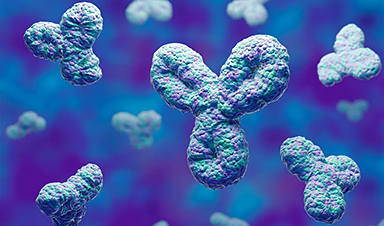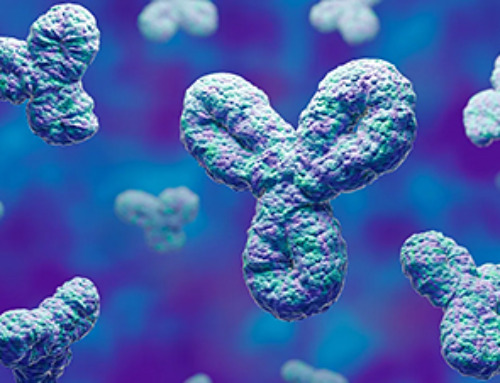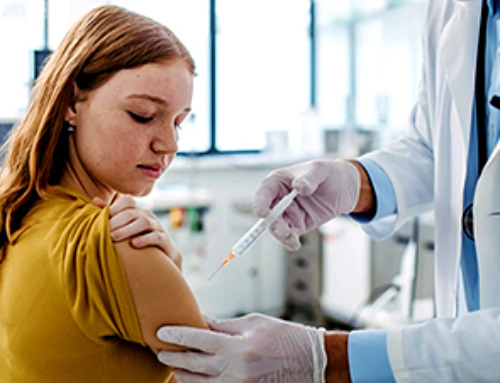In a potential game changer for COVID-19 pandemic control efforts, a new cell phone app and lab kit have transformed a smartphone into a COVID-19 / flu detection system. The detection system is among the most rapid, sensitive, affordable and scalable tests known—and can be readily adapted for other pathogens with pandemic potential including deadly variants of COVID and flu. It also provides a platform for inexpensive home-based testing.
The project was led by professors Michael Mahan, David Low and Charles Samuel of UC Santa Barbara, along with Santa Barbara Cottage Hospital physicians Jeffrey Fried, M.D. and Lynn Fitzgibbons, M.D. Additional collaborators include UCSB scientists Douglas Heithoff, Lucien Barnes, Scott Mahan and Gary Fox—as well as Cottage Hospital scientists Katherine Arn, M.D., Andrew Bishop, M.D., and Sarah Ettinger, M.D.
“As new COVID variants emerge globally, testing and detection remain essential to pandemic control efforts,” lead author Michael Mahan said. “Nearly half the world’s population has a smartphone, and we believe that this holds exciting potential to provide fair and equal access to precision diagnostic medicine.”
The collaboration was launched to develop rapid, low-cost diagnostics that can be used by healthcare providers anywhere in the world to diagnose COVID-19. The lab kit can be produced for less than $100, and it requires little more than a smartphone, a hot plate and LED lights. The screening tests can be run for less than $7 each versus $10 to $20 per rapid antigen test and $100 to $150 per PCR test.
The process, termed smaRT-LAMP, is simple and straightforward. A small volume of the patient’s saliva is collected and analyzed by the smartphone app using the phone’s camera and the diagnostic kit. No additional specialty materials are required.
PCR tests are the gold standard due to their sensitivity and accuracy, but they are slow, expensive and not portable. LAMP tests match the sensitivity and accuracy of PCR—at a fraction of the time and cost. Further, LAMP occurs at constant temperature, which is suitable for point-of-care and home-based testing.
“The key finding was solving the LAMP ‘primer-dimer’ problem—false positives due to high sensitivity—which scientists have struggled with for more than 20 years,” Heithoff explained. “It took more than 500 attempts to solve it for COVID-19, after which flu viruses were detected on the very first try.”
The simple lab test can detect and differentiate COVID-19 and the flu, which show very similar respiratory disease symptoms and can lead to misdiagnosis.
“SmaRT-LAMP can detect COVID-19 and can be readily modified to detect novel CoV-2 variants and other pathogens with pandemic potential, including influenza,” Samuel said.
“We hope technologies like this offer new ways of bringing state-of-the-art diagnostics to underserved and vulnerable populations,” Low explained.
The free, custom-built app was developed for the Android operating system and can be downloaded and installed from the Google Play Store. Upon opening the app, the user is presented with an option for a step-by-step tutorial prior to running test samples.
“Rapid and affordable testing of vulnerable populations that are struggling with adequate vaccine and testing is critically important,” explained Fitzgibbons, an infectious disease physician.
“Such early detection and quarantine can also reduce the risk of future global outbreaks,” added Fried, a critical care physician.
News
Specially engineered antibody delivers RNA therapy to treatment-resistant tumors
Elias Quijano, PhD; Diana Martinez-Saucedo, PhD; Zaira Ianniello, PhD; and Natasha Pinto-Medici, PhD, there are 25 other contributors, most from Yale's Department of Therapeutic Radiology and from the departments of genetics, molecular biophysics and [...]
Vaccinated women face fewer cervical cancer risks
New data from Denmark shows the HPV vaccine’s powerful long-term impact, while also revealing why cervical cancer screening is still essential. A Danish study published in the journal Eurosurveillance reports that women who received the human [...]
3D-printed implant offers a potential new route to repair spinal cord injuries
A research team at RCSI University of Medicine and Health Sciences has developed a 3-D printed implant to deliver electrical stimulation to injured areas of the spinal cord, offering a potential new route to [...]
Nanocrystals Carrying Radioisotopes Offer New Hope for Cancer Treatment
The Science Scientists have developed tiny nanocrystal particles made up of isotopes of the elements lanthanum, vanadium, and oxygen for use in treating cancer. These crystals are smaller than many microbes and can carry isotopes of [...]
New Once-a-Week Shot Promises Life-Changing Relief for Parkinson’s Patients
A once-a-week shot from Australian scientists could spare people with Parkinson’s the grind of taking pills several times a day. The tiny, biodegradable gel sits under the skin and releases steady doses of two [...]
Weekly injectable drug offers hope for Parkinson’s patients
A new weekly injectable drug could transform the lives of more than eight million people living with Parkinson's disease, potentially replacing the need for multiple daily tablets. Scientists from the University of South Australia [...]
Most Plastic in the Ocean Is Invisible—And Deadly
Nanoplastics—particles smaller than a human hair—can pass through cell walls and enter the food web. New research suggest 27 million metric tons of nanoplastics are spread across just the top layer of the North [...]
Repurposed drugs could calm the immune system’s response to nanomedicine
An international study led by researchers at the University of Colorado Anschutz Medical Campus has identified a promising strategy to enhance the safety of nanomedicines, advanced therapies often used in cancer and vaccine treatments, [...]
Nano-Enhanced Hydrogel Strategies for Cartilage Repair
A recent article in Engineering describes the development of a protein-based nanocomposite hydrogel designed to deliver two therapeutic agents—dexamethasone (Dex) and kartogenin (KGN)—to support cartilage repair. The hydrogel is engineered to modulate immune responses and promote [...]
New Cancer Drug Blocks Tumors Without Debilitating Side Effects
A new drug targets RAS-PI3Kα pathways without harmful side effects. It was developed using high-performance computing and AI. A new cancer drug candidate, developed through a collaboration between Lawrence Livermore National Laboratory (LLNL), BridgeBio Oncology [...]
Scientists Are Pretty Close to Replicating the First Thing That Ever Lived
For 400 million years, a leading hypothesis claims, Earth was an “RNA World,” meaning that life must’ve first replicated from RNA before the arrival of proteins and DNA. Unfortunately, scientists have failed to find [...]
Why ‘Peniaphobia’ Is Exploding Among Young People (And Why We Should Be Concerned)
An insidious illness is taking hold among a growing proportion of young people. Little known to the general public, peniaphobia—the fear of becoming poor—is gaining ground among teens and young adults. Discover the causes [...]
Team finds flawed data in recent study relevant to coronavirus antiviral development
The COVID pandemic illustrated how urgently we need antiviral medications capable of treating coronavirus infections. To aid this effort, researchers quickly homed in on part of SARS-CoV-2's molecular structure known as the NiRAN domain—an [...]
Drug-Coated Neural Implants Reduce Immune Rejection
Summary: A new study shows that coating neural prosthetic implants with the anti-inflammatory drug dexamethasone helps reduce the body’s immune response and scar tissue formation. This strategy enhances the long-term performance and stability of electrodes [...]
Scientists discover cancer-fighting bacteria that ‘soak up’ forever chemicals in the body
A family of healthy bacteria may help 'soak up' toxic forever chemicals in the body, warding off their cancerous effects. Forever chemicals, also known as PFAS (per- and polyfluoroalkyl substances), are toxic chemicals that [...]
Johns Hopkins Researchers Uncover a New Way To Kill Cancer Cells
A new study reveals that blocking ribosomal RNA production rewires cancer cell behavior and could help treat genetically unstable tumors. Researchers at the Johns Hopkins Kimmel Cancer Center and the Department of Radiation Oncology and Molecular [...]





















